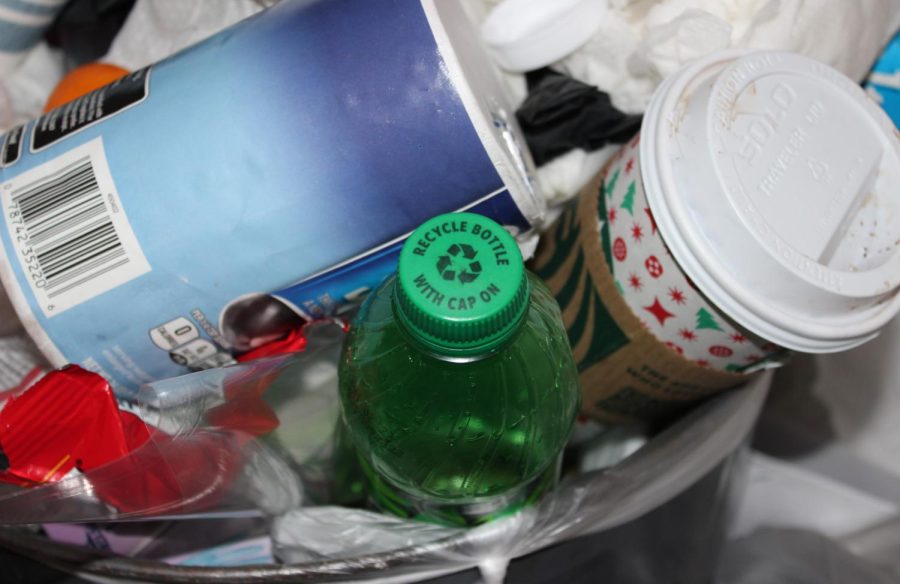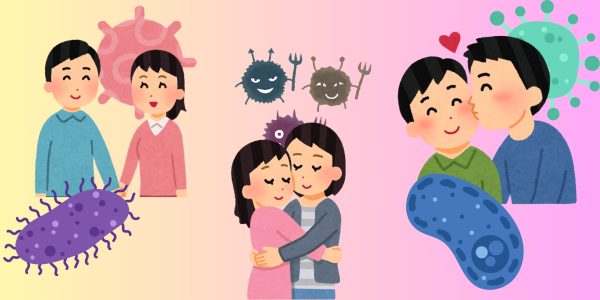Painting green lies
As landfills overflow with supposedly recyclable items, the world inches closer to irreversible climate change. Although companies advertise their products as “eco-friendly,” this is typically only partially true
100% organic. Sustainable. Ethically sourced. These are just some of the ways the biggest companies on the planet deceive their new target audience: the increasingly eco-friendly youth. But why do these companies go to these lengths? Why are newer generations becoming more and more environmentally conscious? Record breaking temperatures and natural disasters have drawn global attention to the climate change crisis and large corporations have yet to remove their knee from Mother Nature’s neck. In an ingenious effort to keep consumers coming back, these companies have resorted to greenwashing.
“Greenwashing is false advertising,” Shreya Ganesh (12) said. “It’s where you appeal to [people] being like ‘Oh we’re new and we’re being sustainable.’ When, that’s not really a front, but an exaggeration. So, if they’re having a little bit of an eco-conscious movement [when] it’s just one step, that’s not the full truth. It’s not really a lie, but an exaggeration more than anything.”
Although half truths and exaggerations do not seem harmful, on a larger scale, the actual environmental impacts of greenwashing can be devastating. When plastic items are only partially biodegradable, the rest of that item could end up in a landfill or floating in a garbage patch in the Atlantic.
“I think we will not make a substantial change until it’s our priority,” Presley Spiller (12) said. “In order for it to become either America’s priority or just a specific group of politicians, it will take thousands of people dying from infiltrated water, tropical storms [or] living in poverty – all of those things [being] a direct reflection of climate change. Not until our country is in absolute peril will it become a priority.”
It is a known fact that the actions of individual consumers can only do so much – a discouraging fact that often leads people to opt against going green. So how can large scale change truly be made? Implementing policies. Green politics have existed since the late 20th century, but are quickly gaining popularity thanks to younger generations.
“There’s a lot of talk, but not enough walk,” Spiller said. “If you’re looking at it from a political standpoint, you have several congressmen, the President even, that claim they are making steps towards [a] carbon neutral future, but there’s no action to back it up. So, I think even the word being out there is helpful, because it sets foundations for this hypothetical future. However, I think there needs to be a lot more action and I think that the youth of America can do that.”
Large corporations are not the only contributors to climate change, though. Individual consumers can make a difference by implementing a practice learned in elementary school: the three Rs.
“Reduce, reuse, recycle,” Ganesh said. “I think reusing is the best way to reduce waste because you don’t have to buy anything more expensive or buy any new products to replace anything, you can just use what you have. [It’s] the most accessible way to practice sustainability.”
A major downside to going green is its inaccessibility to a majority of people. Companies will oftentimes choose the cheapest methods of production like the burning of fossil fuels or using synthetic materials instead of recycled ones. As a result, companies that do follow sustainable practices hike the prices up to make up for the losses.
“[Sustainability] is definitely limited to an upper class society, so if you have the means and the awareness, I believe that it is a waste of privilege to [not] act accordingly,” Spiller said. “If you are wealthy enough, buy the vegetarian meat that costs $20 a pound. Make that effort because other families [and] underprivileged individuals, they don’t have the means to buy that. They don’t have the means to buy sustainable clothing, because [for] most sustainable clothing, it’s like $500 to buy a dress and [for] fast fashion, it’s like $2 for a tank top. So, obviously they’re going to choose that. So, it’s definitely inaccessible. It’s definitely inequitable. But, I feel like the more we work towards replicating these different resources, the cheaper they become.”
But everyone, regardless of background, can make a change. Any change large or small is a step towards reversing the effects of climate change. Individual actions do make a difference whether that be urging local and state governments to implement green policies or personal decisions like self education on eco-friendly practices and waste reduction.
“This realization that this is a larger issue than it’s been advertised as – I think it’s so important,” Ganesh said. “I think it’s so good – better late than never. I’m excited that this is becoming a larger thing especially in a lot of young people, because you have a lot more time in your life to be making change.”
Your donation will support the student journalists of White Station High School. Your contribution will allow us to purchase equipment and cover our annual website hosting costs.








































